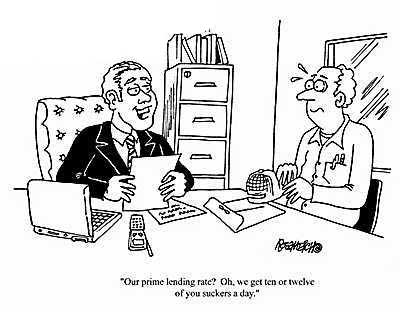New bank regulations ***OUCH***

Federal regulators yesterday cracked down on risky mortgage lending that fueled a housing bubble in the first half of the decade, requiring banks for the first time to ensure that borrowers are able to make dramatically increased payments on mortgages after an initial low-payment period is over.
The final rules for banks issued by the Federal Reserve, Federal Deposit Insurance Corp. and three other bank regulators also are designed to ensure that taxpayers do not end up picking up the tab for lax lending practices that proliferated during the housing boom, enabling people to purchase expensive homes often with no down payments, no proof of income, and even with a history of poor credit and bankruptcy.
While the new rules do not apply to the roughly half of mortgage lenders not attached to banks, state regulators have promised to adopt the federal guidance and issue similar rules for lenders and mortgage brokers they regulate. The Federal Trade Commission, which has jurisdiction over nonbank lenders, also is considering action.
A recent survey by RBC Capital Markets found that consumers remain largely in the dark, not only about the risks of nontraditional mortgages but also about the growing likelihood of a fall or stagnation in the market value of their homes, which would make it more difficult to refinance.
"Those who entered the end of the housing cycle with variable rate and interest-only mortgages are clearly at risk once their mortgages renew,"
foreign investors own about $3 trillion of U.S. mortgage-backed securities, and could start dumping their holdings if delinquencies and defaults rise.
"Given that many global investors are new to the U.S. residential [mortgage-backed securities] market, they may not be prepared. A financial market crisis of some form is a clear possibility."
Do you think these new regulations and record high inventory levels will produce a "soft" landing.

0 Comments:
Post a Comment
<< Home